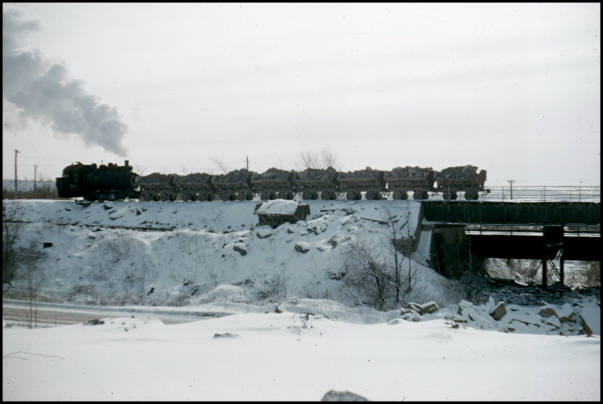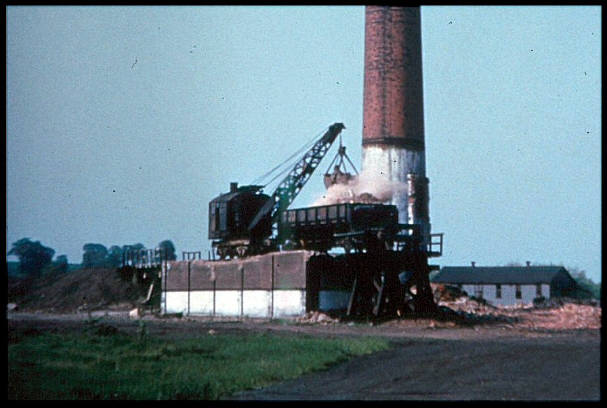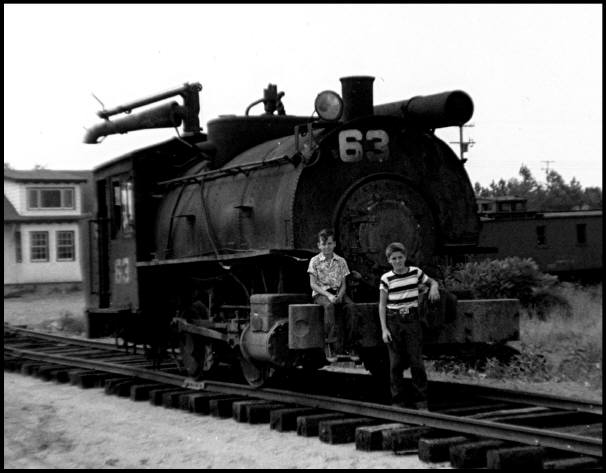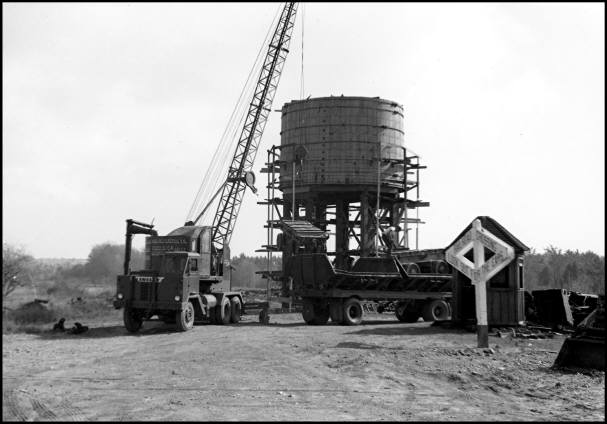Website owned and operated by:
Robert J. Groman
130 Smokey Hollow Road
Baldwinsville, NY 13027
The Solvay Process Company
The Jamesville Quarry was located a few miles southeast of the city of Syracuse, NY in the town of Jamesville, NY. It was owned by the The Solvay Process Company, a Division of Allied Chemical. The quarry started operation in 1909 and used steam operated Manhattan engines. In 1923 the company introduced saddle tank "Dinky" locomotives to haul stone from their quarry. Rather than towing a separate tender with coal and water, water for the locomotive was carried in a tank 'saddled' over the boiler owing to the name "saddle tank." Coal was carried in a small compartment in the rear of the locomotive.
On April 15, 1954, after 45 years of steam operation, the Jamesville Quarry converted from steam locomotives to diesel locomotives. Dr. Groman purchased 13 of steam locomotives from the Solvay Process Company. All locomotives were of the saddled tank type save one - No. 25, a 60 ton 0-6-0 Alco, with a slope-back tender.


"The first steam-operating railroad museum in the U.S.A."
Locomotive No. 77 takes a load of crushed stone from the Jamesville Quarry to the stone crusher in February, 1954. No. 77 was a 50 ton 0-4-0 saddle tank locomotive built in 1927 by the Baldwin Locomotive Works. It was the last steam locomotive operated at the quarry and John Burke was the engineer. Dr. Groman purchased 13 steam locomotives from The Solvay Process Company. [Photo by Stanley Groman, RCHM Photo Collection]
Browning Steam Crane No. 3 in operation at Solvay Process in 1954. [Photo by Stanley Groman, RCHM Photo Collection]



Robert Groman (L) and Arnold Bell (R) pose by Locomotive No. 63 from the Jamesville Quarry shortly after it was transported to Rail City by the Syracuse Rigging Company. No. 63 was a 32 ton locomotive built in 1926 by the American Locomotive Company (ALCO). On August 22, 1954 No. 63 was the first locomotive fired up at Rail City. Ed Nolan from Pulaski, NY had the distinct honor of being the first engineer at the museum. [Photo by Stanley Groman, RCHM Photo Collection]
Dr. Groman also purchased an eight-wheel locomotive steam crane built in 1917 by the Browning Company of Cleveland. It had a 70 foot beam, a Link Belt clamshell bucket, and a 25-ton counterweight. The steam crane had to be dismantled and moved in four separate parts to Rail City Museum and then reassembled. It took two weeks to prepare the steam crane for transport. All of the equipment from the Jamesville Quarry and Solvay Process was in operating condition at the time of purchase.
In addition to the 13 steam locomotives, five Koppel quarry cars, and one Browning Steam Crane, Dr. Groman also purchased 40 tons of rail, a locomotive tank, and one cable car from The Solvay Process Company. A total of 632 tons of equipment was removed from The Solvay Process Company and transported to Rail City Museum. It took 22 truckloads to move all of this material to Rail City.

Also acquired from the Jamesville Quarry were five angel beam stone cars manufactured by the Koppel Industrial Car Equipment Company. Each car weighed 9 tons, had reinforced steel trays, had 30 inch wheels, were hinged on both sides, and had a capacity of 10 cubic yards of stone.
Two of the five Koppel quarry cars are unloaded at Rail City. A crane had to be available to load the equipment in Jamesville and to unload it at Rail City Museum. In the background is the 50,000 gallon water tower from Lowville, NY under construction. To the right is a flagman's shanty from Oswego, NY and a railroad crossing sign from the New York Central Railroad. The stand-pipe to the left of the crane also came from Lowville, NY. [Photo by Stanley Groman, RCHM Photo Collection]